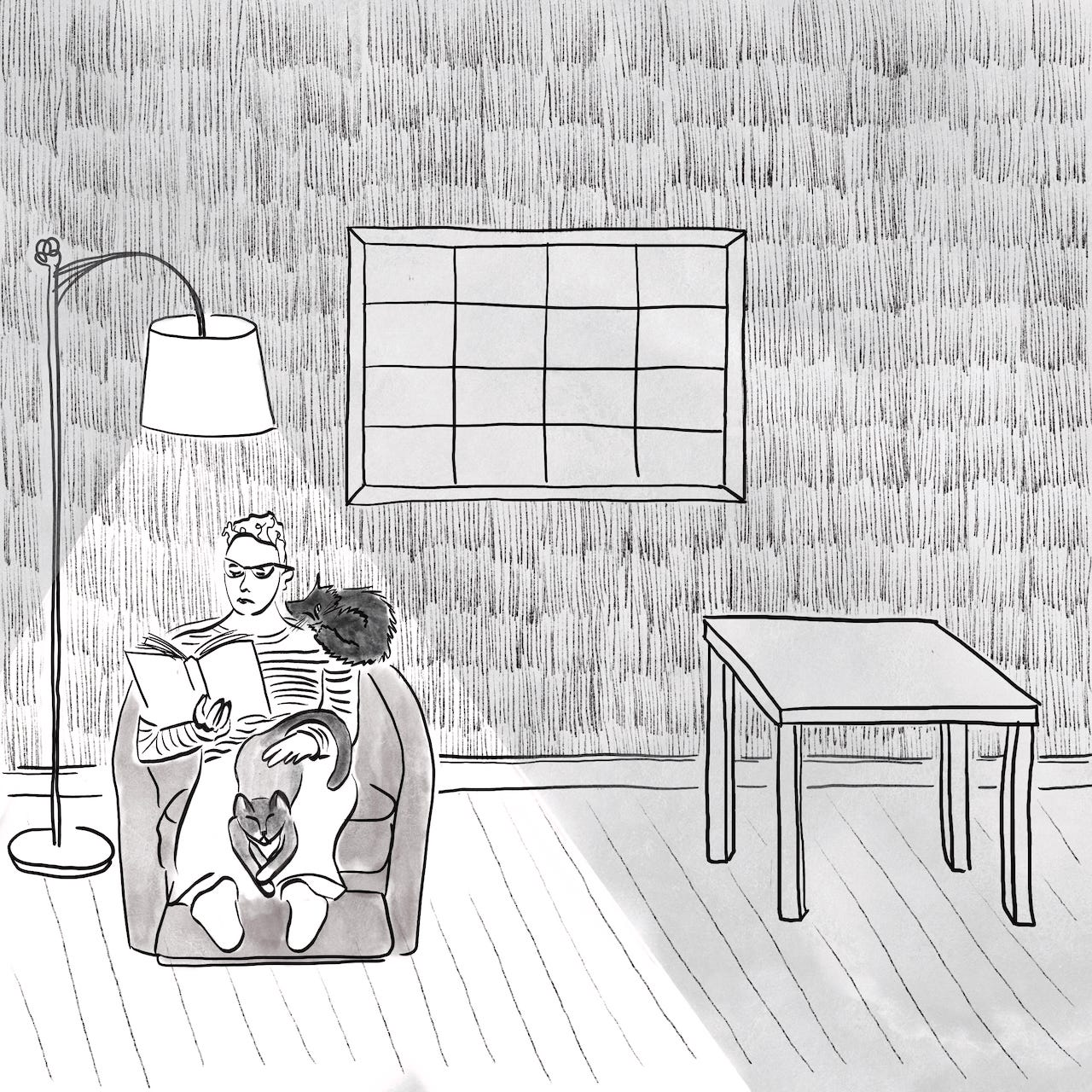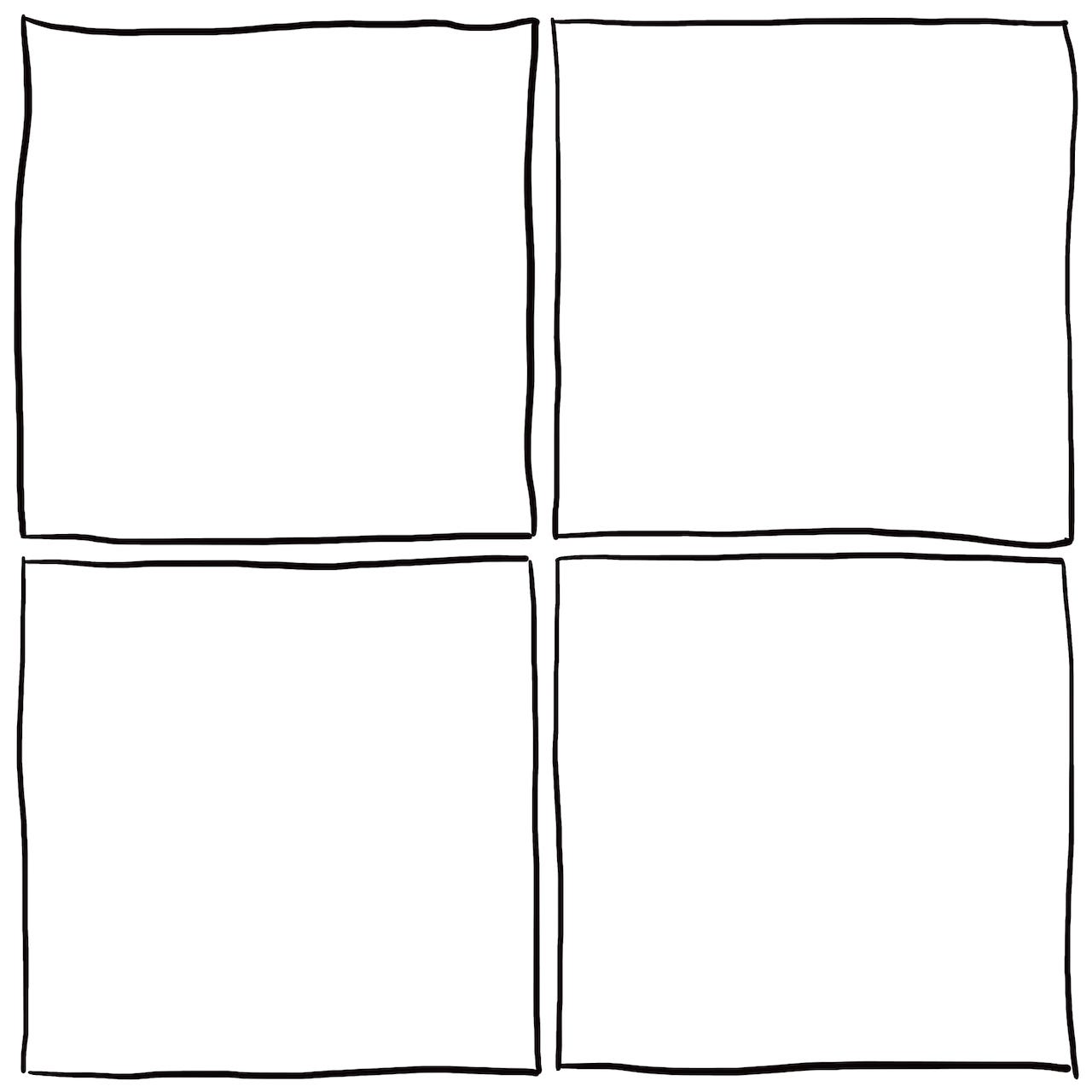Last year, my friend K. Woodman-Maynard was interviewed on the podcast Authentic Obsessions with Margret Petrie. In that interview, she described how cartoonists usually consider themselves to be more of one thing or the other: a writer or a visual artist.
Hands down, she considers herself more of an artist. Art first, story second. (And her watercolor comics are lush & beautiful. If you’re interested in the process of making long-form comics, be sure to check out her Substack.)
I, on the other hand, am a writer first. When I draw comics, the story matters more to me than the art (even though the combination of the two is where the magic lives).
And while I’ve always considered myself a writer, I’m fairly new to comics. I started drawing four-panel comics during a euphoric/exhausted phase when I’d just finished writing the first draft of my book Floppy back in 2017. I needed to pause before I jumped back into its wordy revisions.
In the meantime, I wanted a new creative outlet, preferably something I knew very little about. A medium in which I could just play and not take myself too seriously. That became comics. Eventually I got hooked and they became part of my writing process, one which also helped to strengthen my prose.
All that to say, everything I learned about the visual language of comics I filtered through the lens of what I already knew about writing.
So this is the beginning of a series about how drawing comics can help you become a better wordsmith and storyteller. And I’ll be giving examples and terminology that tracks for us story-first types.
I’m going to focus on four-panel comics in particular. They’re short. They fit on one page. And while they’re simple, the possibilities within that simplicity are endless
A quick note on drawing before we begin:
I believe anyone who learned to form letters in kindergarten has the skills to draw comics. But I also know lots of people have mental blocks around drawing.
I’m not going to nudge you around those blocks, but if you’re interested in drawing inspiration for people who “can’t draw,” check out Lynda Barry’s Making Comics (or any of her other craft books), or Rebecca Fish Ewan’s book Doodling for Writers).
In any case, NO DRAWING REQUIRED for any of the exercises I’m going to give in this series.
If you make comics already, do you consider yourself more of a writer or more of a visual artist? Let me know in the comments!
In book news, I’m delighted to report that Floppy is a finalist for the 2024 Oregon Book Award (in creative nonfiction)!
Check out the full list if you’re looking for some excellent hibernation-season reads.







Let’s go! I started the year challenging myself to sketch regularly, in hope of learning how to illustrate some of my stories, so I’m stoked for this series.
I'm so excited for this series!